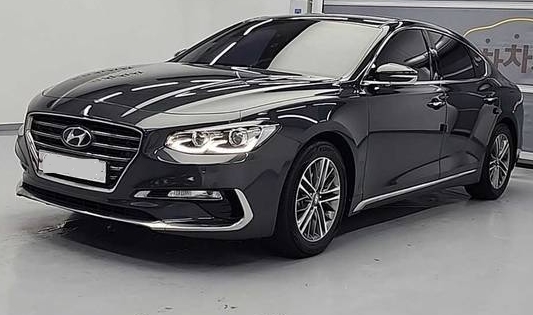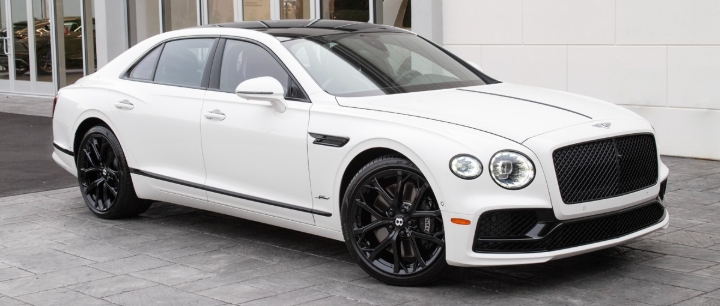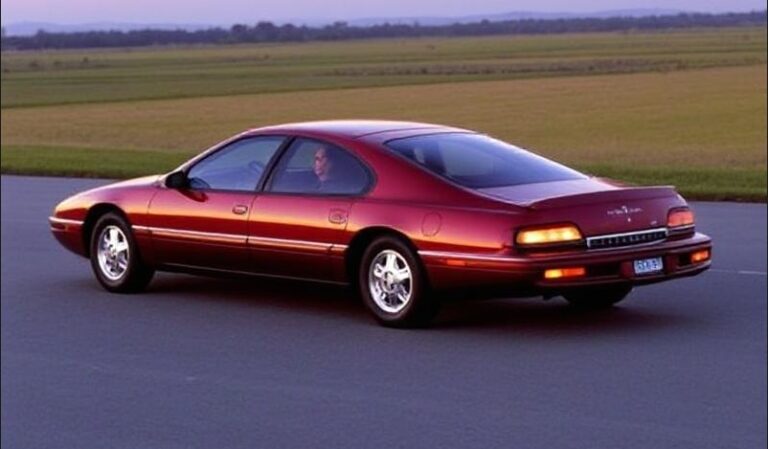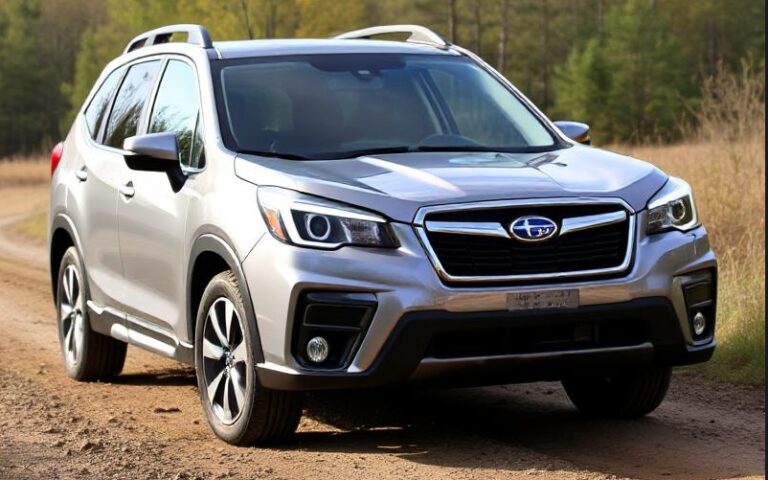The Evolution of The Hyundai Grandeur
Of all the vehicles in Hyundai’s expansive global portfolio, none tells the story of the company—and indeed, of South Korea’s own economic ascent—quite like the Grandeur. More than just a car, the Grandeur has served as the brand’s flagship for nearly four decades, a rolling barometer of its ambitions, technological prowess, and design confidence. Its evolution from a licensed Japanese executive car to a globally acclaimed, design-forward luxury sedan is a compelling narrative of progress. This is the factual history of the Hyundai Grandeur.
First Generation (L): The Chairman’s Car (1986–1992)
In the mid-1980s, South Korea was on the cusp of an economic boom, preparing to host the 1988 Seoul Summer Olympics. Hyundai Motor Company, having found success with its compact Pony and mid-size Stellar, sought to produce a full-size luxury sedan to cater to the nation’s burgeoning class of executives and government officials. Lacking the in-house experience to develop such a vehicle from scratch, Hyundai entered into a partnership with Mitsubishi Motors.
The result was the first-generation Hyundai Grandeur, launched in 1986. It was essentially a rebadged second-generation Mitsubishi Debonair, a car known for its conservative, angular styling. This boxy, formal aesthetic earned it the affectionate nickname “Gak-Grandeur” (Angular Grandeur) in its home market. Despite its derivative origins, it was a landmark vehicle. It was the first Hyundai to be equipped with a V6 engine, a significant step up in prestige and performance. The Grandeur quickly became the ultimate status symbol in Korea, the vehicle of choice for corporate chairmen and dignitaries, and the official transport vehicle for the 1988 Olympics.
Models and Trim Levels:
Engine Options: The initial models featured a 2.0L Sirius inline-four engine. This was soon complemented by a 2.4L version of the same engine. The true flagship, however, was the model powered by Mitsubishi’s 3.0L Cyclone V6, which cemented its luxury credentials.
Trim Levels: Trim designations were simpler in this era, often tied directly to the engine displacement. The primary models were the 2.0, 2.4, and the top-tier 3.0 V6.
Second Generation (LX): Finding a Softer Edge (1992–1998)
For its second act, the Grandeur continued its collaboration with Mitsubishi. The “New Grandeur,” as it was marketed, was a joint development based on the third-generation Mitsubishi Debonair platform. Launched in 1992, this model departed from the severe angles of its predecessor, embracing the smoother, more aerodynamic “jellybean” styling popular in the early 1990s.
It was larger, more luxurious, and packed with advanced features for its time, including available electronically controlled suspension, airbags, and anti-lock brakes. While still a Mitsubishi co-development, Hyundai had significantly more input in the design and engineering, tailoring the vehicle more specifically for the Korean market’s tastes. This generation further solidified the Grandeur’s position as the nation’s premier sedan. Hyundai also used this platform to create an even more luxurious, long-wheelbase version called the Hyundai Dynasty, which served as a true flagship limousine.
Models and Trim Levels:
Engine Options: Powertrains were upgraded to a new generation of Mitsubishi-designed V6 engines. The lineup included a 2.5L V6, a 3.0L V6, and a range-topping 3.5L V6 for the most powerful variants. A 2.0L inline-four was also available at the entry level.
Trim Levels: Similar to the first generation, trims were largely engine-dependent. Common designations included 2.0 DOHC, 2.5 V6, 3.0 V6, and 3.5 V6.
Third Generation (XG): A Declaration of Independence (1998–2005)
The third-generation Grandeur, codenamed XG, was a pivotal moment. Launched in 1998, it was the first Grandeur developed entirely in-house by Hyundai, marking a significant break from its Mitsubishi reliance. With this model, Hyundai set its sights on international markets. Sold as the Hyundai XG in North America and Europe, it was the brand’s first serious attempt to compete in the near-luxury sedan segment outside of Korea.
Its design was a radical departure, featuring swooping lines, distinctive round tail lamps, and, most notably, frameless door glass—a feature typically found on more expensive European coupes and sedans. The Grandeur XG was a statement of Hyundai’s growing confidence and design capabilities. A significant facelift in 2002 updated the front grille, headlights, and interior, keeping it competitive through its lifecycle.
Models and Trim Levels:
Engine Options: The XG was powered by Hyundai’s own Delta and Sigma family of V6 engines.
XG250: 2.5L Delta V6
XG300: 3.0L Sigma V6 (prior to facelift)
XG350: 3.5L Sigma V6 (introduced with the facelift)
Trim Levels: In North America, the model was sold as the XG300 and later the XG350, with trims often designated as a base L model and a more feature-rich Limited version.
Fourth Generation (TG): The Global Diplomat (2005–2011)
With the fourth-generation Grandeur (TG), Hyundai fully committed to its global strategy. Launched in late 2005, this was the first model to be widely marketed and sold as the Hyundai Azera in most export markets, including North America. The Azera name was chosen to create a distinct, more premium identity separate from Hyundai’s value-oriented reputation at the time.
The design of the TG was more conservative and mature than the flamboyant XG, targeting the heart of the full-size sedan market occupied by the Toyota Avalon and Nissan Maxima. The focus was on refinement, quality, and interior space. It was built on a new front-wheel-drive platform and powered by Hyundai’s new, all-aluminum Lambda V6 engines, which offered a significant leap in power and smoothness. A mid-cycle refresh in 2010 brought revised fascias, a new 6-speed automatic transmission, and updated interior tech.
Models and Trim Levels:
Engine Options: A 2.7L Mu V6 and the new 3.3L and 3.8L Lambda V6 engines were the primary offerings. A 2.2L diesel was also available in some markets.
Korean Trim Levels: Q270, L330, and S380, corresponding to engine displacement.
North American (Azera) Trim Levels: SE (often with the 3.3L V6) and the fully-equipped Limited (with the 3.8L V6).
Fifth Generation (HG): The Fluidic Sculpture Revolution (2011–2017)
The fifth-generation Grandeur (HG), launched in 2011, was a design sensation. It was one of the most dramatic expressions of Hyundai’s “Fluidic Sculpture” design language, which had already transformed models like the Sonata. Characterized by bold, sweeping lines and a dynamic, coupe-like roofline, the HG looked far more expensive and stylish than any of its predecessors.
This generation was also a technological powerhouse, introducing Gasoline Direct Injection (GDI) engines for improved power and efficiency. In 2013, Hyundai introduced the Grandeur Hybrid, pairing a 2.4L gasoline engine with an electric motor, marking the model’s first step into electrification. The interior quality and feature list took a massive leap forward, rivaling true luxury brands with available panoramic sunroofs, Nappa leather, and advanced infotainment systems.
Models and Trim Levels:
Engine Options: The primary engines were the 2.4L Theta II GDi inline-four and the 3.0L and 3.3L Lambda II GDi V6 engines. A 2.2L diesel and a 3.0L LPi (liquefied petroleum gas) version were also offered in Korea.
Korean Trim Levels: A more complex structure emerged, including HG240 Modern, HG300 Premium, and HG330 Exclusive/Celebrity.
North American (Azera) Trim Levels: The structure was simplified, usually offered in a well-equipped Base model and a top-tier Limited trim.
Sixth Generation (IG): Refined Tech and a Daring Facelift (2016–2022)
Launched in late 2016, the sixth-generation Grandeur (IG) moved away from the dramatic curves of the HG towards a more refined and stately aesthetic. Its defining feature was Hyundai’s new “Cascading Grille,” which would become a signature element across the brand’s lineup. This generation placed a heavy emphasis on safety and technology, being one of the first Hyundai models to feature the comprehensive “Hyundai SmartSense” suite of advanced driver-assistance systems.
However, the most talked-about version of the IG arrived with its radical 2019 facelift. Dubbed “The New Grandeur,” it was one of the most extensive mid-cycle updates in automotive history. The front end was completely transformed with a “Parametric Jewel” grille that integrated the daytime running lights directly into the diamond-shaped patterns of the grille itself. The wheelbase was lengthened, and the rear featured a sleek, full-width light bar. The interior was also fully redesigned with a futuristic dual-screen cockpit. This bold refresh signaled Hyundai’s intent to position the Grandeur as a design and technology leader. This generation also marked the discontinuation of the Azera name in North America after the 2017 model year, making the Grandeur a primarily domestic-focused flagship once again.
Models and Trim Levels:
Engine Options: A wide range was offered, including a 2.4L GDi, a 2.5L Smartstream GDi (post-facelift), 3.0L GDi V6, 3.3L GDi V6, 2.2L diesel, and 3.0L LPi. A hybrid based on the 2.4L engine was also a core part of the lineup.
Trim Levels: The Korean market saw trims like Modern, Premium, Exclusive, and the range-topping Calligraphy.
.
Many car aficionados have multiple hobbies, like boating as well as auto stuff. Those who don’t already own a boat (and even some that do), may have thought about building their own boats. It’s really not as hard as you’d think. Just take a look at these easy boat building plans!

.
Seventh Generation (GN7): A Heritage-Fueled Future (2022–Present)
The current, seventh-generation Grandeur, launched in late 2022, is arguably the most audacious in the model’s history. Its design is a stunning blend of futuristic minimalism and heritage-inspired details. The exterior is defined by the “Seamless Horizon Lamp,” a single, ultra-thin LED strip that runs across the entire front of the car, with the actual headlamps discreetly integrated into the grille below.
The interior pays direct homage to the first-generation “Gak-Grandeur” with a distinctive single-spoke steering wheel. The rear quarter glass panel is another direct nod to the 1986 original. Despite these retro cues, the cabin is a high-tech sanctuary, dominated by a panoramic digital display and premium materials. The GN7 Grandeur is an unapologetic flagship, designed not just to lead Hyundai’s lineup but to compete with established premium brands on design, technology, and luxury.
Models and Trim Levels:
Engine Options: The powertrain lineup includes a 2.5L Smartstream GDi four-cylinder, a more powerful 3.5L Smartstream GDi V6, a 3.5L LPi V6, and an advanced 1.6L Turbo Hybrid.
Trim Levels: The lineup is structured into three main tiers: Premium, Exclusive, and the ultimate luxury Calligraphy trim, which offers features like semi-aniline leather, massaging seats, and exclusive interior finishes.
From a licensed rebadge to a global trendsetter, the Hyundai Grandeur’s journey is a microcosm of Hyundai’s own relentless pursuit of progress. It has consistently reflected the aspirations of its time, evolving from a symbol of corporate success into a beacon of high-tech, design-led luxury. For nearly 40 years, it has remained the heart of the Hyundai brand and the enduring standard-bearer for the Korean luxury automobile.







